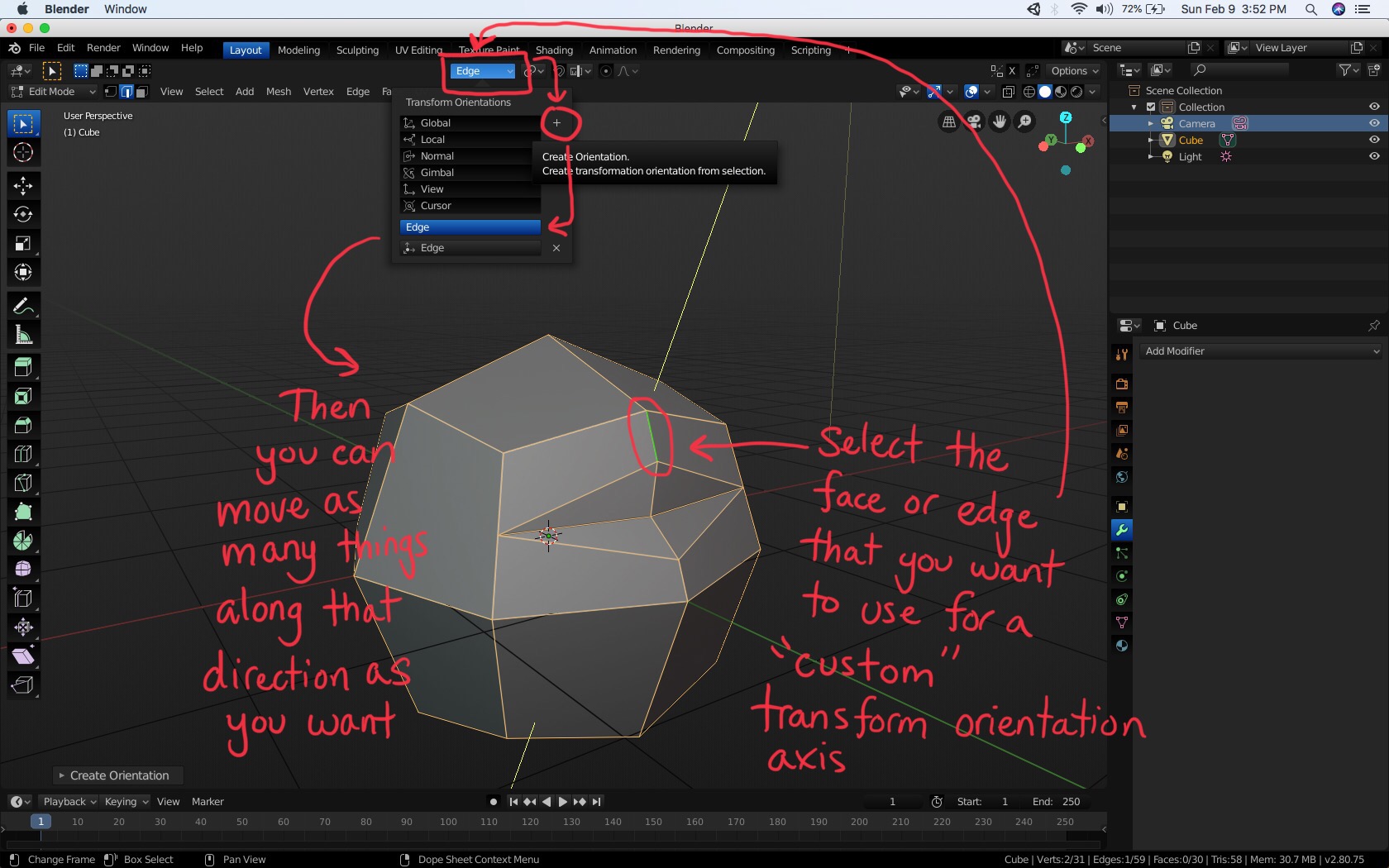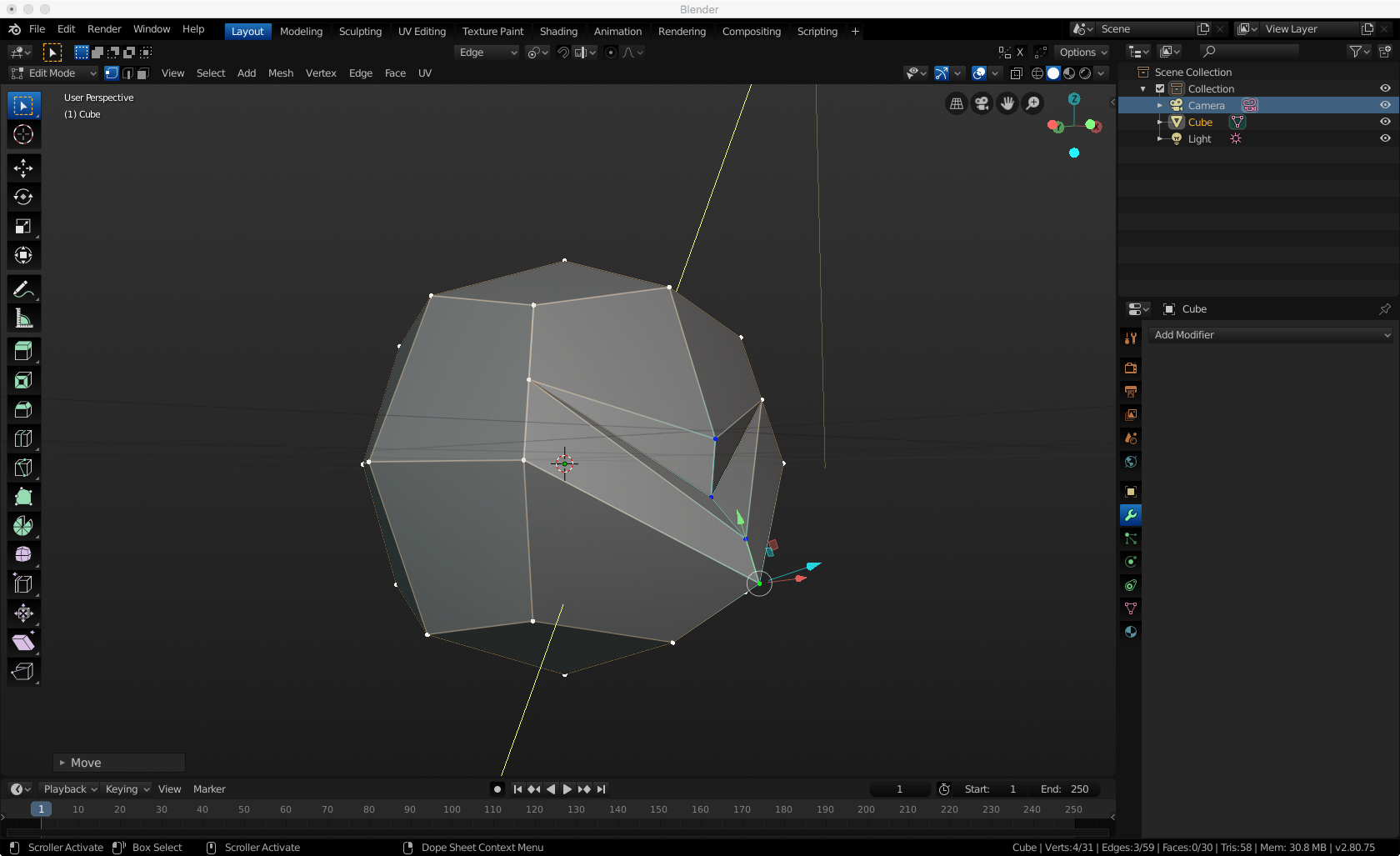I ran into an issue trying to move some verts on the local versus global axis. I made a quick vid explaining what I am trying to do. Any help would be greatly appreciated!
It would not let me see the video on my computer for some reason. But see if this forum topic helps.
https://cgcookie.com/questions/8790-moving-vertexes-along-curved-plank-axis
Good luck!
Thanks for the reply Shawn. Although there was useful information in that link, it didn't solve my issue. Try checking this link https://youtu.be/hMhDti65YuE. Not sure why the first one didn't work.
![]() frosty_beard unfortunately when I click on it Youtube tells me the video is marked as private and is unviewable. But funny enough the uploaded video here now works! haha
frosty_beard unfortunately when I click on it Youtube tells me the video is marked as private and is unviewable. But funny enough the uploaded video here now works! haha
Okay so you got really close to figuring it out. You just need to make a custom transform axis using either a face or an edge.
In your case looks like any face along that plank will do just fine. Pick one and follow the commentary in my picture and you should be all set to move all of those vents down along the 'normal' of that plank surface.
So, for example I chose the edge I circled and then selected 4 verts just below it and was able to "slide" then along that normal that I created for a custom transform axis (I slid them along the 'custom y-axis direction' in this case).
Make sense?
This is the custom transform explanation as far as I understand it.:The custom transform orientation just takes the selection's normals and makes them the new custom transform axis' to be used on anything you select without updating to a different transform direction.
That is so awesome! thank you for taking the time to help me out. It worked perfectly!
![]() frosty_beard Glad to help. I am still new to a lot of this stuff. I try to help where I can when I have time. You'll hopefully pay it forward when you can too. We have all been there at some point or another.
frosty_beard Glad to help. I am still new to a lot of this stuff. I try to help where I can when I have time. You'll hopefully pay it forward when you can too. We have all been there at some point or another.
I see that you already figured out a different solution but let me explain how the local axes work.
Basically local orientation axes are the world orientation axes rotated by the rotation of the object in object mode.
Imagine that when you create a new object, the local axes are glued to it, and when you rotate it in object mode, they rotate as well.
When you apply the rotation, it resets the local axes, so they are again the same as world axes. When you select everything in edit mode and rotate, it doesnt change the orientation of local axes, because the object rotation data remain the same.
Thats probably the reason why it didnt work for you, you either applied rotation or rotated everything in edit mode.
Also, you can access the local axes by pressing the axis key twice when transforming. So if you want to move something along the local Z axis for example, you can press G and then Z twice.
Great explanation ![]() tomasplasil I think frosty_beard's issue was that he wanted to move multiple verts of vary-ing normal's along that normal of the plank.
tomasplasil I think frosty_beard's issue was that he wanted to move multiple verts of vary-ing normal's along that normal of the plank.
In this example, with a simple object like a plank being oriented the same as the global/local axis, your explanation works great!
But on a much more complex geometry the local axis option may not work for everything like on a face that is not necessarily in one of the local axis directions like on my low poly sphere, which is where the custom Orientation Option would probably come in more handy. Then you don't necessarily have to worry about object versus edit rotation, you can just make a custom orientation for what you need and go back.
Don't get me wrong though. Having proper rotation in object/edit mode planned out should not be neglected for certain modeling workflows.